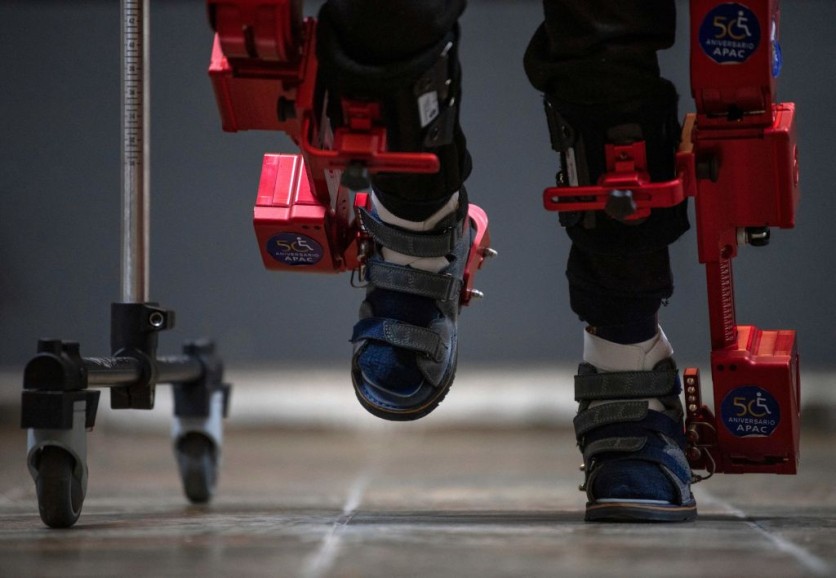French tennis star, paraplegic Kevin Piette has reportedly donned an artificial intelligence-powered exoskeleton to carry the Olympic flame.
The French tennis player suffered an accident that left him paraplegic around 11 years ago. However, he made a comeback to the game as a paraplegic. Currently, a video of the paralympic tennis player is gaining millions of views on social media.
The para-athlete can be seen in the video walking with the Olympic torch in his arms thanks to a robotic exoskeleton. He helped to enhance it as one of the first testers and even participated in "triathlons," which are contests in which individuals with disabilities utilize assistive technology to carry out daily tasks.

(Photo : CLAUDIO CRUZ/AFP via Getty Images)
David Zabala, an 8-year-old boy with cerebral palsy, is assisted by physical therapists during a rehabilitation session with the robotic exoskeleton Atlas 2030 at the Association for People with Cerebral Palsy (APAC) in Mexico City on October 18, 2022.
A customized exoskeleton, which is now utilized in rehabilitation, is currently being developed to allow for increased independence at home.
Piette started working as an exoskeleton pilot for Wandercraft, a Paris-based startup with its main office currently located in New York. The business says it created the first walking exoskeleton that stabilizes on its own in history.
The Personal Exoskeleton from Wandercraft makes it possible for those who are unable to walk to stand and walk once more.
According to Wandercraft, the exoskeleton is intended to give individuals with mobility impairments a new mobility solution that will satisfy their complex, long-term physical and mental needs and increase their level of independence.
The world's first self-stabilizing walking exoskeleton for rehabilitation support, Wandercraft's Atalante X exoskeleton, incorporates groundbreaking engineering and robotic breakthroughs that are now built into the Personal Exoskeleton.
Other AI Exoskeletons
Exoskeletons driven by artificial intelligence have emerged as the most current advancement in future technology. In addition to Wandercraft, AI was also included in the technology in a project conducted at North Carolina State University in Chapel Hill and the University of North Carolina.
The study's invention, which provides remarkable energy savings throughout human activities, gives users the sense of carrying 26 pounds lighter. Daily tasks and physical performance thus increase significantly.
The AI algorithm for the exoskeleton is presently under development. It crosses a new line where technology augments human abilities and goes beyond conventional machine learning, which focuses on simulations and games.
The ability of the exoskeleton to offer synergistic assistance for a variety of activities, including walking, running, and stair climbing, is one of its most remarkable features.
Because the learned controller adapts automatically to each user's kinematic patterns, it facilitates transitions between activities with ease and doesn't require manual control.
Exoskeleton Efficiency
The results of the experiment are very impressive. The greatest reduction in metabolic expenditures was seen by contemporary portable exoskeletons while walking (24.3%), running (13.1%), and stair climbing (15.4%).
The flexible and experiment-free control technique, which does away with the need for time-consuming human testing and manually created rules, is responsible for this exceptional outcome.
Related Article : Nurses Can Wear This Exoskeleton to Easily Lift Elderly Patients





